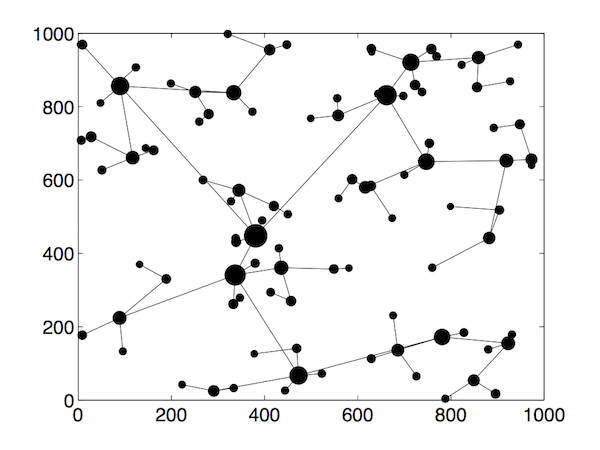This is a simulation created in MATLAB to investigate the population dynamics in a nation, created as a project in the course Simulation of Complex Systems at the Chalmers University of Technology, Göteborg, Sweden.
The project was conducted by Frida Alsterlund and Oscar Johander
More specifically the mechanisms that generate a power-law distribution are examinated by extending an existing model based on a hierarchial economic flow within a nation.
The inspiration came from Semboloni, F. (2008) "Hierarchy, cities size distribution and Zipf's law". The European Physical Journal B, June 2008, Volume 63, Issue 3, pp 295–301. link to springer.com.
From the abstract of our report:
"Since much of economic activity is situated in cities, it is interesting to research the dynamics of urban systems. In this report, the size-rank law, stating that the cities' population and their rank within a nation follows Zipf's law is investigated. We give some examples of real world data, and present an existing model to generate such a distribution. This model has been implemented. The goal of this study is to further expand this model to describe more aspects of the underlying dynamics. More specifically, we incorporate migration of the system's population, based on the growth of the cities. Also, the geographic aspect is studied by letting an external disturbance influence the population's migration. The study shows that this system is tolerant to such expansions, still generating the expected distribution."
The figure above shows a spatial distribution of the hierarchial network of cities retrieved after 40 000 iterations by the model based on growth. The area of each circle corresponds to each city's population size.
For the full report, click here [pdf]!

